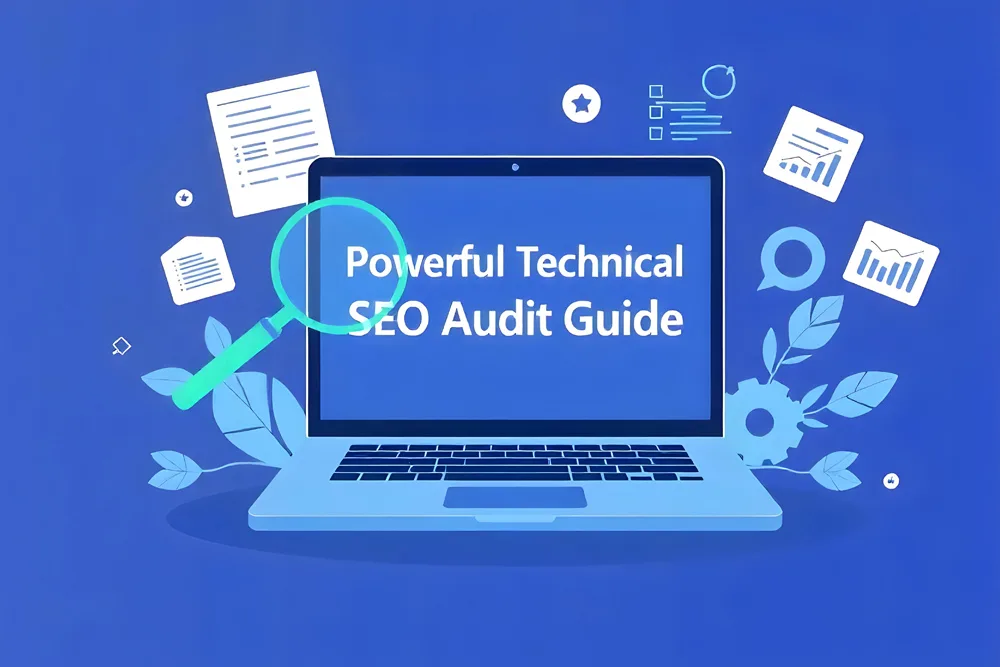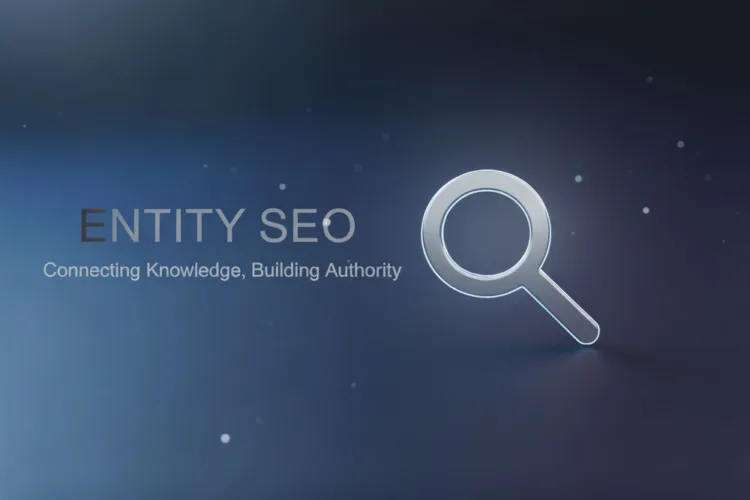
SEO professionals face challenges in creating audits that deliver real improvements, leading to wasted time, unresolved issues, and strained client relationships. Technical SEO audits are the prime key for identifying and resolving underlying technical issues that may hinder your website’s visibility and performance in search engine results. Addressing these challenges, you can unlock the full potential of your online presence. Here are seven key tips for powerful technical SEO audits.
1. Start with a Comprehensive Site Crawl
The foundation of any effective technical SEO audit lies in conducting a comprehensive site crawl. This process involves utilizing specialized software or tools to systematically explore and analyze every nook and cranny of your website, uncovering potential issues that may be hindering its performance.
Start a thorough site crawl with these steps:
- Identify the Right Tool: Choose a reliable and reputable site crawling tool that aligns with your website’s size, complexity, and specific requirements. Popular options include Screaming Frog, DeepCrawl, and Botify.
- Configure Crawl Settings: Customize the crawl settings to ensure that the tool accurately captures and analyzes all relevant aspects of your website. This may include adjusting the crawl depth, specifying crawl patterns, and defining which file types or directories should be included or excluded.
- Run the Crawl: Once the settings are configured, initiate the site crawl and let the tool methodically explore your website, gathering data on various technical aspects such as URLs, response codes, redirects, meta tags, and more.
- Analyze the Results: Upon completion of the crawl, carefully review the generated reports and data to identify potential issues, such as broken links, duplicate content, missing or duplicate meta tags, and any other technical inconsistencies or errors.
2. Analyze and Fix Crawl Errors
Analyze and address any crawl errors or issues identified during the process. These errors range from broken links and redirects to server errors and accessibility issues.
Effectively analyze and fix crawl errors with these steps:
- Prioritize Critical Issues: Not all crawl errors are created equal. Start by prioritizing the most integral issues that could significantly impact your website’s performance, such as server errors, broken internal links, and duplicate content.
- Investigate Root Causes: For each identified issue, take the time to thoroughly investigate and understand its root cause. This will help you develop targeted and effective solutions, rather than merely addressing surface-level symptoms.
- Develop and Implement Solutions: According to your analysis, develop and implement appropriate solutions to resolve the identified issues. This may involve fixing broken links, implementing 301 redirects, consolidating duplicate content, or optimizing server configurations.
- Validate and Monitor: After implementing the solutions, validate their effectiveness by recrawling your website or monitoring relevant metrics, such as search engine rankings, site speed, and user engagement. Continuously monitor for any new issues that may arise and address them promptly.
3. Consider feasibility and development priorities
While conducting a technical SEO audit, it’s crucial to strike a balance between addressing identified issues and considering the feasibility and development priorities of your organization. Some technical fixes may require significant resources, time, and effort, necessitating a strategic approach to prioritization.
Navigate this challenge effectively with these steps:
- Assess the Impact and Effort: For each identified issue, evaluate its potential impact on your website’s performance and the effort required to resolve it.
- Align with Business Goals: Ensure that the technical SEO improvements you plan to implement align with your organization’s overall business goals and priorities. This will help secure buy-in and support from stakeholders and decision-makers.
- Develop a Roadmap: Based on your impact and effort assessments, as well as organizational priorities, develop a comprehensive roadmap that outlines the sequence and timeline for addressing the identified issues. This roadmap should balance critical technical fixes with available resources and development cycles.
- Collaborate with Development Teams: Technical SEO audits often require collaboration with development teams to implement the necessary changes. Foster open communication and establish clear expectations and timelines.
- Continuously Reevaluate and Adjust: As your website and business evolve, regularly reevaluate your technical SEO priorities and adjust your roadmap accordingly. Maintaining flexibility and adaptability is key to ensuring that your efforts remain aligned with your organization’s evolving needs and goals.
4. Plan to Measure Improvements
Conducting a technical SEO audit is an ongoing process that requires continuous monitoring and measurement to ensure the effectiveness of your efforts. By proactively planning to measure improvements, you can quantify the impact of your technical SEO initiatives and make data-driven decisions for future optimizations.
Measure improvements effectively with these steps:
- Establish Baseline Metrics: Before implementing any technical SEO changes, establish a baseline for relevant metrics such as search engine rankings, organic traffic, page load times, and conversion rates.
- KPI: Identify the specific KPIs that align with your technical SEO goals and objectives. These KPIs could include metrics such as crawl errors, page speed scores, structured data validation, and search visibility.
- Implement Tracking and Monitoring: Leverage analytics tools and platforms to track and monitor your defined KPIs consistently. This may involve setting up custom dashboards, configuring event tracking, or integrating third-party monitoring solutions.
- Analyze and Interpret Data: Regularly analyze the collected data to identify patterns, trends, and correlations between your technical SEO efforts and the observed improvements or regressions. Interpret the data in the context of your business objectives and industry benchmarks.
- Iterate and Optimize: Based on your data analysis, identify areas for further optimization and refine your technical SEO strategies accordingly.
5. Check and Improve Site Architecture
A well-structured and intuitive site architecture is essential for both search engines and users to navigate and know your site effectively. During a technical SEO audit, it’s crucial to evaluate and optimize your site’s architecture to ensure a seamless browsing experience and improved search engine visibility.
To check and improve your site’s architecture, consider the following steps:
- Analyze Site Structure and Navigation: Conduct a comprehensive analysis of your website’s structure and navigation patterns. Identify any potential issues, such as excessive depth, convoluted paths, or confusing navigation menus, that could hinder user experience and search engine accessibility.
- Optimize URL Structure: Evaluate your website’s URL structure and ensure it follows best practices, such as using descriptive and keyword-rich URLs, avoiding unnecessary parameters or session IDs, and maintaining a logical hierarchy.
- Implement Breadcrumb Navigation: Combine breadcrumb navigation on your site. This can improve usability and aid in effective content indexing.
- Leverage Sitemaps and Structured Data: Create and submit comprehensive XML sitemaps to search engines, ensuring that all your website’s content is easily discoverable.
- Consolidate and Eliminate Duplicate Content: Identify and address any instances of duplicate or near-duplicate content across your website. This could involve implementing canonical tags, redirects, or content consolidation strategies to avoid potential penalties and ensure optimal search engine visibility.
- Monitor and Maintain: Regularly monitor and maintain your site’s architecture, addressing any emerging issues or changes promptly.
6. Validate and Optimize Structured Data
Structured data, provides search engines with additional context and understanding of your website’s content. By validating and optimizing your structured data implementation, you can enrich the visibility and display of your content in search results, potentially increasing click-through rates and user engagement.
Validate and optimize your structured data with these steps:
- Identify Relevant Schema Types: Determine the appropriate schema types that best represent the content and entities on your website. Common schema types include articles, products, events, organizations, and local businesses, among others.
- Implement Schema Markup Correctly: Ensure that your schema markup is implemented correctly and follows the latest guidelines and best practices provided by major search engines.
- Test and Validate Across Platforms: Test and validate your structured data implementation across different platforms and devices to ensure consistent rendering and visibility.
- Monitor and Update Structured Data: Regularly monitor and update your structured data implementation to reflect any changes or updates to your website’s content or the schema.org specifications. Outdated or inaccurate structured data can negatively impact your search visibility.
- Leverage Structured Data for Rich Results: Optimize your structured data implementation to qualify for rich results, such as featured snippets, knowledge panels, or carousels.
- Analyze and Iterate: Continuously analyze the performance of your structured data implementation and iterate based on the insights gained.
7. AI to Enhance Your Audits
In the rapidly evolving landscape of technical SEO, leveraging the power of AI can quite enhance the efficiency and effectiveness of your audits. AI-powered tools and techniques offer valuable insights, automation capabilities, and predictive analytics, empowering you to conduct more comprehensive and data-driven audits.
Here are some ways AI can enhance your technical SEO audits:
- Automated Site Crawling and Analysis: AI-powered crawlers can quickly and thoroughly analyze your website, identifying technical issues with greater accuracy and efficiency than traditional crawlers.
- Natural Language Processing (NLP) for Content Analysis: NLP algorithms can analyze your website’s content, identifying potential issues such as duplicate content, thin content, or keyword cannibalization. These algorithms can also suggest content optimization opportunities based on semantic analysis and user intent understanding.
- Machine Learning for Pattern Recognition: Machine learning models can be trained to recognize patterns and correlations between technical factors and search engine performance.
- Predictive Analytics for Forecasting: AI-powered predictive analytics can help you forecast the potential impact of technical optimizations on your website’s performance.
- Automated Reporting and Visualization: AI-powered tools can generate comprehensive and visually appealing reports, making it easier to communicate findings and recommendations to stakeholders.
- Continuous Monitoring and Alerting: AI-driven monitoring systems can continuously monitor your website’s technical health, alerting you to any emerging issues or deviations from established benchmarks.
To conclude, conducting effective and powerful technical SEO audits is crucial. By following these tips, you can ensure that you achieve a website that is optimized for search engines.



